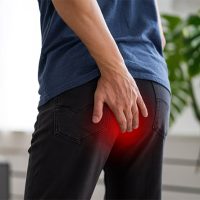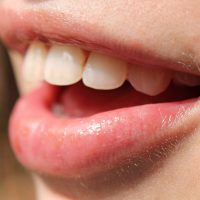Varicose veins, those unsightly, bulging veins that often appear on the legs, are usually considered a cosmetic issue. However, they can also cause discomfort and lead to more serious health problems. But could these veins be a silent indicator of underlying vascular disease? This article explores the potential connection between varicose veins and vascular disease, providing insights into this common but often misunderstood condition.
Varicose Veins: More Than a Cosmetic Issue
Varicose veins are a common condition, affecting millions of people worldwide. These enlarged, twisted veins are often seen as a cosmetic issue, but they can also cause physical discomfort, including aching, swelling, and a heavy feeling in the legs.
The development of varicose veins is primarily due to the weakening or damage of one-way valves in the veins. These valves play a crucial role in blood circulation as they prevent blood from flowing backward. When these valves fail, blood can pool in the veins, causing them to enlarge and become varicose.
In severe cases, varicose veins can lead to more serious health problems. Skin changes, inflammation, and venous ulcers are among the complications that can arise from untreated varicose veins.
Varicose veins can also be associated with other health conditions. For instance, they are often seen in individuals with Ehlers-Danlos syndromes, a group of disorders that affect connective tissues supporting the skin, bones, blood vessels, and many other organs and tissues.
Varicose Veins and Vascular Disease: A Potential Connection
Varicose veins and vascular disease are two conditions that, at first glance, may seem unrelated. However, emerging research suggests that there may be a connection between the two.
Vascular disease encompasses a range of conditions that affect the blood vessels, including arteries, veins, and capillaries. These conditions can lead to serious health problems, such as heart attack and stroke. Varicose veins, on the other hand, are enlarged, twisted veins that are often seen as a cosmetic issue. However, they can also cause physical discomfort and lead to more serious health problems if left untreated.
There is ongoing research into the potential link between varicose veins and vascular disease. Some studies suggest that varicose veins may be an indicator of a higher risk of deep vein thrombosis (DVT), a serious condition where a blood clot forms in a deep vein, usually in the leg.
One of the key factors in the development of varicose veins is the weakening or damage of one-way valves in the veins. These valves play a crucial role in blood circulation as they prevent blood from flowing backward. When these valves fail, blood can pool in the veins, causing them to enlarge and become varicose.
This mechanism of blood pooling and vein enlargement is also seen in certain types of vascular disease. For instance, in conditions like chronic venous insufficiency, the veins do not efficiently return blood from the legs to the heart, leading to blood pooling and potentially the formation of varicose veins.
Furthermore, the growth of new blood vessels, a process known as angiogenesis, and the growth of new lymphatic vessels, known as lymphangiogenesis, are actively involved in a number of pathological processes, including tissue inflammation and tumor dissemination. This process is also seen in the development of varicose veins.
This potential connection between varicose veins and vascular disease underscores the importance of understanding and addressing varicose veins beyond their cosmetic implications. It also highlights the need for further research to fully understand this potential link and its implications for patient care.
Detecting Vascular Disease: The Importance of Early Diagnosis
Early detection of vascular disease is crucial for effective treatment and prevention of complications. Medical applications of infrared thermography, a non-invasive method that maps body surface temperature, have been used to detect vascular disorders.
Infrared thermography can potentially be used to identify areas of poor blood flow associated with vascular disease. This method could provide a valuable tool for early detection and intervention, particularly for individuals with varicose veins who may be at a higher risk of vascular disease.
Moreover, other diagnostic tools such as ultrasound imaging, computed tomography (CT) scans, and magnetic resonance imaging (MRI) are also used to detect vascular diseases. These imaging techniques can provide detailed images of blood vessels and can help identify blockages or abnormalities that could indicate a vascular disease.
In addition to imaging, blood tests can also be used to detect vascular diseases. For instance, high levels of homocysteine, a type of amino acid, in your blood can increase your risk of vascular diseases. Similarly, high levels of C-reactive protein (CRP) can indicate inflammation in the blood vessels.
Managing Varicose Veins and Vascular Disease: Prevention and Treatment
Prevention and treatment of varicose veins and vascular disease often involve lifestyle changes. Regular exercise, a healthy diet, and avoiding prolonged standing or sitting can all help to manage these conditions.
Medical treatments, such as compression therapy, medication, and surgical procedures, may also be recommended depending on the severity of the condition. Recently, supplements have been gaining attention for their potential benefits in managing varicose veins. For instance, by PureHealth Research, a range of supplements have been developed to support vascular health.
In addition to lifestyle changes and medical treatments, it’s also important to manage other health conditions that can contribute to vascular disease, such as high blood pressure and diabetes. Regular check-ups and discussions with your healthcare provider can help manage the risks and ensure you’re taking the necessary steps to maintain your vascular health.
Invasive treatments for varicose veins include sclerotherapy, where a solution is injected directly into the vein causing it to scar and collapse, and endovenous laser treatment, where a small laser fiber is inserted into the vein, delivering short energy bursts to heat up and damage the vein, causing it to collapse and eventually disappear.
Conclusion
While varicose veins are often seen as a cosmetic issue, they may be a silent indicator of underlying vascular disease. More research is needed to fully understand this potential connection. However, it’s clear that maintaining good vascular health is important for everyone, whether or not they have varicose veins.


